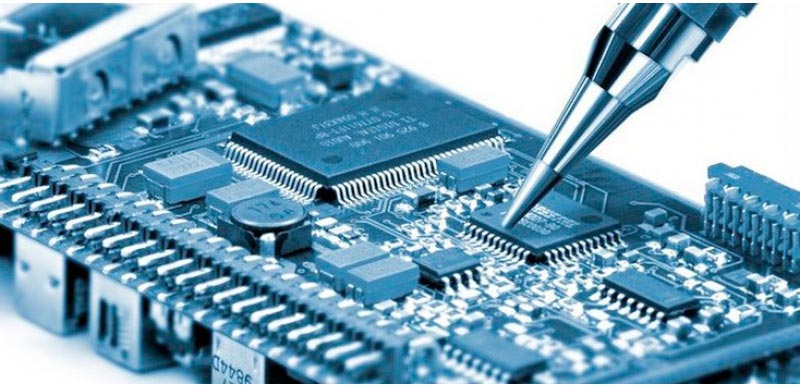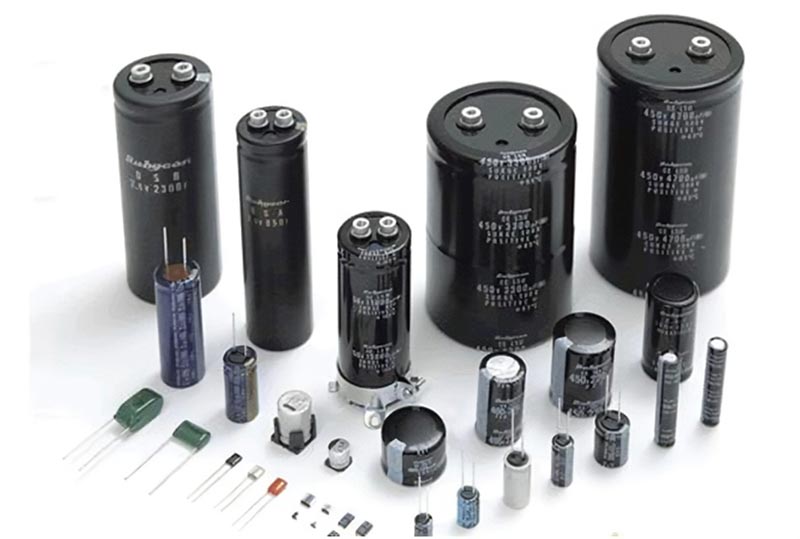Introduction:
Electronics manufacturing is an important part of the global economy, which not only drives technological innovation but is also a key driver of economic growth in many countries. In this highly competitive industry, quality and cost are seen as two key factors for business success. However, the conventional view is that improving quality often means increasing cost, which puts pressure on companies to control cost while pursuing high quality products. The aim of this paper is to explore the relationship between quality and cost in the electronics manufacturing industry and to analyse whether there exists a strategy that can optimise both at the same time.
The importance of quality in the electronics manufacturing industry
In the electronics manufacturing industry, product quality is not only the cornerstone of enterprise survival and development, but also a key factor in shaping brand image and enhancing market competitiveness. The level of quality directly affects consumers’ purchasing decisions, customer satisfaction and the long-term profitability of the enterprise.
1、Enhance customer satisfaction and loyalty
High-quality electronic products can meet or even exceed consumer expectations, thus greatly enhancing customer satisfaction. Satisfied customers are more likely to become loyal customers and develop long-term trust and dependence on the brand. Loyal customers will not only make repeat purchases, but will also bring more potential customers to the company through word-of-mouth.
2、Reduce after-sales service costs and product recall risks
High-quality products are less likely to fail or be defective, which directly reduces the need and cost of after-sales service. In addition, reducing product defects can also significantly reduce the likelihood of product recall and related risks, recall is not only costly, but also seriously damage the enterprise’s brand image and consumer trust.
3、Enhance market competitiveness and brand image
In the electronics manufacturing industry, a highly competitive market, quality has become an important symbol of the distinction between products and brands. High-quality products can make enterprises stand out among many competitors and enhance market competitiveness. At the same time, the continuous provision of high-quality products can also shape and enhance the enterprise’s brand image, to attract more consumers.

4、Promote innovation and technological progress
The continuous pursuit of quality drives enterprises to continuously carry out technological innovation and product optimisation to meet the growing market demand and consumer expectations for high quality. Such innovation and progress can not only improve product quality, but also promote the technological development and upgrading of the entire industry.
5、Achieving long-term profitability
Although the initial investment in quality improvement may increase costs, in the long run, high-quality products can bring enterprises a more stable customer base, lower after-sales costs and stronger market competitiveness, thus achieving long-term profitability and sustainable development.
In summary, the importance of quality in the electronics manufacturing industry cannot be ignored. Enterprises should take quality as one of their core competencies and continuously improve the quality of their products through continuous technological innovation, strict quality control and excellent customer service in order to achieve long-term success and development.
Cost Consideration in Electronics Manufacturing
Cost control is crucial for companies in the electronics manufacturing industry, and it is directly related to their profitability and market competitiveness. In this highly competitive industry, effective cost management not only improves the profit margin of an enterprise, but also enhances the market competitiveness of its products.

1、Raw material cost
Raw material cost is an important part of cost control in electronic manufacturing industry. With the development of globalisation, the price of raw materials is affected by a variety of factors, such as exchange rate changes, supply and demand, and international trade policies. Therefore, companies need to reduce the cost and risk of raw materials through a variety of ways, such as long-term purchasing contracts, diversified supplier strategy.

2、Production cost
Production costs include direct labour costs, manufacturing overheads and so on. Effective production cost control not only needs to optimize the production process and improve labour efficiency, but also needs to reduce labour cost and improve production efficiency by adopting automated and intelligent production equipment. In addition, the introduction of management concepts such as lean production can also significantly reduce waste and optimise production costs.
3、Research and development costs
In the electronics manufacturing industry, where technology is developing rapidly, continuous product innovation and technological research and development is the key to maintaining competitiveness. However, R&D activities often require a large amount of capital investment. Enterprises need to balance R&D costs and innovation results through effective project management, rational allocation of resources, and strengthening cooperation with research institutes and universities.

4、Marketing and distribution costs
Marketing and distribution costs are also one of the important costs that electronic manufacturing enterprises need to consider. Against the backdrop of fierce competition in the global market, companies need to expand their market share through effective market positioning, channel management and marketing strategies, while controlling related costs to improve overall profitability.
5、Management costs
Management costs include overheads in administration and human resource management. By optimising the organisational structure, improving management efficiency and adopting information technology management system and other measures, management costs can be effectively reduced and the operational efficiency of the enterprise can be improved.
Analysis of the interrelationship between quality and cost
In the electronics manufacturing industry, the relationship between product quality and cost is complex and subtle. On the one hand, improving product quality often requires increased cost investment; on the other hand, proper cost control may affect the final quality of the product. Therefore, how to find a balance between quality and cost is an important issue that electronic manufacturing companies must face.
1、The relationship between quality improvement and cost increase
Improving product quality usually requires better raw materials, more sophisticated production equipment, more efficient quality control processes, etc., which may lead to increased costs. For example, the use of higher standard raw materials can improve the reliability of the product, but at the same time, it will also increase the cost of raw materials. Similarly, the introduction of advanced automated production lines can improve production efficiency and product consistency, but the initial investment cost is higher.
2、Balance between cost control and quality maintenance
While cost control is a basic requirement for business operations, over-compression of costs may compromise product quality, thus affecting long-term business development. Therefore, companies need to control costs by optimising production processes, improving production efficiency and adopting lean production, while ensuring that product quality is not compromised. For example, waste in the production process can be reduced through lean production, which reduces costs and helps maintain or even improve product quality.
3、Long-term benefits of cost inputs and quality improvement
In the long run, appropriate cost inputs are beneficial to improving product quality and enhancing enterprise competitiveness. High-quality products can enhance consumer satisfaction and loyalty, reduce the cost of after-sales service and product recalls, and thus bring enterprises a larger market share and higher profit returns in the long run. Therefore, companies should view cost investment as an investment in improving quality and achieving long-term growth.
4、Finding the best balance between quality and cost
Enterprises need to find the best balance between quality and cost through continuous technological innovation, management optimisation and other measures. This includes the use of cost-benefit analysis, value engineering and other methods to systematically assess the impact of different options on quality and cost, so as to make the best decision. In addition, companies need to develop a customer-centric view of quality to ensure that they can control costs without sacrificing customer expectations and needs.
Conclusion and Recommendations:
In the electronics manufacturing industry, quality and cost management are key factors for business success. Through in-depth analyses and practical case studies, we can draw the following conclusions and make recommendations accordingly.
Conclusion:
1、Quality is fundamental: high-quality products can improve customer satisfaction and enhance brand loyalty, thus bringing enterprises a larger market share and higher profit margins. Quality management is not only about the product itself, but also involves the whole production process and supply chain management.
2、Cost control is necessary: under the premise of ensuring quality, effective cost control can improve the competitiveness of enterprises. By optimising production processes, adopting new technologies and achieving economies of scale, enterprises can reduce costs and improve efficiency.
3、The balance between quality and cost is key: enterprises need to find a balance between not sacrificing product quality and effective cost control. This requires companies to carry out continuous technological innovation and management optimisation.
Suggestions:
1、Strengthen the quality management system: establish and improve the quality management system to ensure that every step from raw material procurement to product production meets high standards. At the same time, strengthen the quality control of suppliers to ensure the quality of raw materials and components.
2、Adopt advanced technology and management methods: Use automation, information technology and other advanced technologies to improve production efficiency and quality consistency. Adopt lean production, six sigma and other management methods to optimise the production process, reduce waste and cut costs.
3、Conduct cost-benefit analysis: In the decision-making process, conduct cost-benefit analysis on different production options, raw material selection, technology inputs, etc., to ensure that each investment brings the maximum return.
4、Cultivate a customer-centred culture: Make customer needs and satisfaction the core of business operations, and build strong brand loyalty by providing high-quality products and services to satisfy customers’ needs.
5、Continuous innovation: In the fierce market competition, only through continuous innovation can an enterprise remain competitive. This includes product innovation, technological innovation, management innovation and other aspects.
Conclusion:
Enterprises in the electronics manufacturing industry can only be invincible in the competition by strengthening quality management, achieving effective cost control and finding the best balance between the two. By adopting the above suggestions, enterprises can improve quality while controlling costs and achieve sustainable development.


